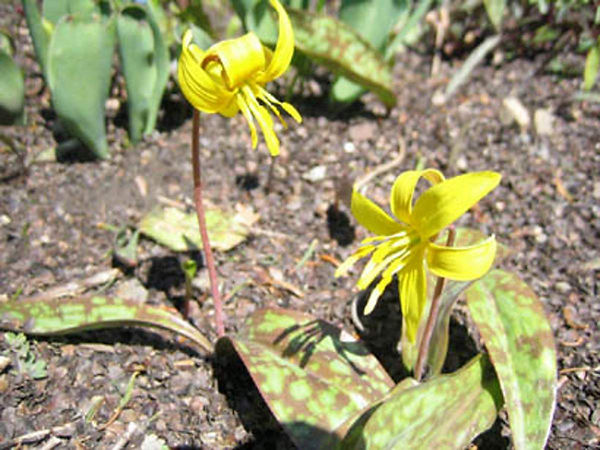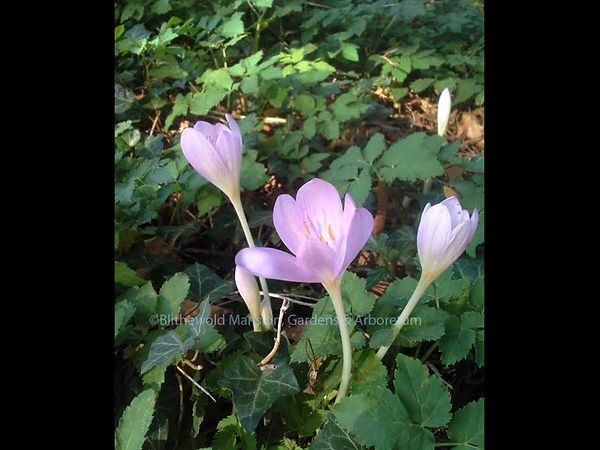Arboretum & Garden

Stop 4.1: History: the Family
The towering canopy of trees, thriving green shrubbery, and flourishing blooms make the Bosquet a delight in any season—daffodils in spring, wildflowers, ferns, and cool shade in the summer, colorful leaves in autumn, and protective solitude in winter. Its beauty was just as striking when Augustus visited Blithewold with his daughter Marjorie in 1894. Marjorie wrote,
“My father loved the place. But he restrained himself from buying it to at least consult his wife! A week or two later, we went ... again. This time my mother was with us. ... She fell in love with it also, and so the family became the owners of Blithewold.”
The Van Wickles summered at Blithewold for several years, turning it into a summer paradise with every activity imaginable, and taking full advantage of their new yacht, with frequent trips to Newport and luncheon parties.
In 1898, Bessie was pregnant with Augustine when Augustus was killed in a skeet-shooting accident. The next few years were a time of readjustment, and the family spent much of their time at Blithewold, surrounded by friends. They were joined by Estelle Clements, a close friend of Bessie’s, who would stay on with the family as a companion thereafter.
In 1901, Bessie married William McKee, a family friend, and the family moved from Pennsylvania to Boston. This made their visits to Blithewold much more frequent, and improved Bessie’s ability to manage the gardens.

Stop 4.2: Spring: Daffodils
During the spring, you’ll find dozens of varieties of daffodils here. Two of the most numerous are ' Ice Follies' a pale-yellow variety, and 'King Alfred', a somewhat stronger yellow trumpet daffodil. ‘Ice Follies', is the world’s second most numerous daffodil, and the very first to bloom in the Bosquet. The ‘King Alfred’ was introduced here more than a century ago, in 1899.
The family began planting bulbs here at the turn-of-the-century because naturalizing daffodils along paths and under trees was a gardening trend at the time. They were seeking to emulate the English country estates. The bulbs were generally imported from England. Blithewold's garden staff began adding to the bulbs in the Bosquet and along the Shrub Walk soon after the property opened to the public in the late 1970s; planting several thousand bulbs each autumn for several years., including 'Ice Follies' and 'King Alfred.'
To continue exploring our more than 100,000 daffodils, follow the path deeper into the Bosquet. Stop at the fork.
Later in the season, you may find the daffodil variety 'Poeticus actaea' here. You can identify it by its small white petals and red-rimmed center disk.

Stop 4.3: Spring: Other Flowers
If you’re visiting in the spring, you can find white trillium here, or Trillium grandiflorum, which have petals and leaves that grow in threes.
You can also search for colonies of our native Mayapples, or Podophyllum peltatum, in this area. When they first emerge in the spring they resemble pointed umbrellas opening up to a large round leaf.
All around the fountain you will find Blue Myrtle, or Vinca Minor. Also called Periwinkle, this plant’s rich green foliage and blue-purple flowers bloom in early spring and summer.
Look for the ground cover plants with spotted leaves and yellow flowers. This is a northeast native called Trout Lily, or Erythronium americanum, because the foliage resembles the coloring of the spotted trout. According to Native American folklore, when trout lilies bloom, the trout would begin to run in the rivers. Some colonies of Trout Lily can be up to a hundred years old. This is a slow-growing plant that requires an undisturbed area.
Can’t find it? Don’t worry. The ephemeral nature of Trout Lily is such that its foliage will completely disappear in under 6 weeks, leaving no trace of the plant visible to the naked eye.

Stop 4.4: Summer
More information coming soon.

Stop 4.5: Fall
More information coming soon.

Stop 4.6: Winter
More information coming soon.

Stop 4.7: Pet Cemetery
Marjorie first saw pet cemeteries on her 1903 trip to Europe.

Stop 4.8: Garden Restoration
Ongoing maintenance of any garden requires replanting. Many of the Bosquet’s trees are reaching the end of their life cycle. Over time, most of the diseased trees will be removed and replaced by appropriate species.